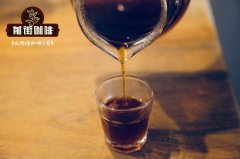What is the flavor and taste of SL28 and SL34 washed by AB in Karinga producing area of Kenya? Kenya Karinga

Professional coffee knowledge exchange more coffee bean information please follow the coffee workshop (Wechat official account cafe_style)
What is the flavor and taste of SL28 and SL34 washed by AB in Karinga producing area of Kenya? The story of growing coffee in Karinga, Kenya?
Karinga, Kenya, developed by the Gitwe Farmers' Cooperative in Thit, is 1650-1800 meters long. Karinga is the last of the Kenyans, before the new harvest reaches our doorstep a few months later. This coffee illustrates why Kenyan coffee is still one of the few popular sources of coffee. The classic Kenyan style includes a range of fruit notes (blackcurrant, berry) and a solid body. Karinga shows these properties appropriately, and this kind of coffee brewing is so enjoyable.
Karinga Coffee Factory (water washing factory) is located in Kirinyaga, central Kenya province. It belongs to the Gitwe Farmers Cooperative and is made up of about 600 farmers. The factory is surrounded by a tea-growing area. Most farmers are tea-based people, so most of them grow tea more easily than tea. But management is now encouraging farmers to return to their farms because the price of coffee fruit is rising. Kenya's AA is often rated as one of the brightest coffee beans in the world, and of course this is a debate between coffee cups and daily specialty coffee lovers.
What is certain, however, is that Kenya's AA is one of the best coffee beans known and one of the most popular coffee connoisseurs. The largest and best coffee beans from Kenya are Kenya's AA and peaberry grades. Kenyan AB is also often rated high and is an acceptable alternative when AA is not available.
Affiliated members of the factory carry out all agronomic activities related to coffee production, that is, they purchase coffee from coffee research stations and plantations in accordance with the prescribed guidance. Field work includes weeding, pruning, spraying, fertilization, mulching and technical advice. Provide technical advice through farmer training programs and field visits provided by the Ministry of Agriculture.
Compliance with the agreed guidelines is inspected and supervised by the field committee around the farm. They usually check whether coffee does not grow with other crops such as corn, although they allow intercropping with macadamia nuts.
In this cup, it is attracted by the smell of flowers, followed by a series of red berries and blackcurrants. There is a subtle floral hue in the topcoat to soften the acidity of the fruit. The smooth taste further complements this complex and structured surface.
Production: about 600 small farmers in the surrounding area send cherries to the wet mill.
Varieties: SL 28pi SL 34 and Ruiru 11 (99%)
Home page »single native coffee beans »African Coffee »Kenya coffee beans Kenya AA coffee beans
Kenya AA coffee beans
Kenyan coffee
AA, Kenya, which is 6600 feet above sea level, is considered one of the best coffee beans in the world. Higher altitude means legumes grow faster than lower altitudes, providing more nutrition and giving them more time to develop their tastes and ripeness.
Region: Kenya
Growth altitude: 1700-1800 m
Variety: Arabica
Harvest time: November-December
Grinding process: completely washed and dried on the bed
Aroma: fresh, flowers
Aroma: bergamot, berry, lemon grass
Body: rich and heavy
Acid: bright
The coffee beans produced in the highlands of Kenya have a full body and rich flavor, with very pleasant acidity. The aroma also has floral notes, with a wine finish / finish, as well as citrus and berry aromas.
The largest screen size in the Kenyan coffee grading system is E (Elephant), followed by PB (Peaberry) and AA, which means that green coffee beans are slightly larger than 1/4 inches in diameter (1 inch). Although AA is the most common product on the market, other products can sometimes be found without significantly affecting the flavor of the product.
The height limit of coffee farms in Kenya is strictly high yield (SHG) / strict hard beans (SHB)-the best
Altitude: 1850 m
Processing: all coffee is pulped, dried, fermented, washed, soaked and sun-dried. Cherries are hand-sorted by farmers as immature and overripe before entering production. The disc pulping machine can remove skin and pulp. Coffee is graded into three grades according to its density through a pulper. Stage 1 and stage 2 were fermented respectively. Level 3 is considered low-level. Ferment the coffee in a closed shade for 16-24 hours. After fermentation, the coffee is washed and density graded again in the washing channel, and then soaked in clean water for 16-18 hours. The coffee is then dried on an African drying bed for up to 21 days. Coffee is covered with plastic at noon and at night.
The flavor is balanced, sweet and pungent. Sour berries-strawberries, cranberries-cedar and aromas and cups of sweet and sour citrus. Smooth and round acidity; slightly syrup, almost creamy taste. Perfect bitter sweet chocolate and citrus peel.
Important Notice :
前街咖啡 FrontStreet Coffee has moved to new addredd:
FrontStreet Coffee Address: 315,Donghua East Road,GuangZhou
Tel:020 38364473
- Prev

What is a Vietnamese coffee pot? How do you make Vietnamese coffee? The reasons for the failure of coffee brewing in Vietnam
Professional coffee knowledge exchange more coffee bean information Please follow the coffee workshop (Wechat official account cafe_style) in fact Tiamo also has a Vietnamese coffee pot that is very refined (or Amour, the same shape), and is a new style. These two were bought in the local market in Vietnam and are of old style. The one on the left is made of aluminum and the one on the right is made of stainless steel. Vietnamese kettle made of aluminum
- Next

How does Vietnamese coffee taste? What are the coffee brands in Vietnam?
Professional coffee knowledge exchange More coffee bean information Please pay attention to coffee workshop (Weixin Official Accounts cafe_style) Strong taste Vietnam with tropical climate, most of the Robusta beans planted are high caffeine and heavy taste, most of which are made into instant coffee for export, so most of the coffee drunk in Vietnam is Robusta. In recent years, fine coffee and starba have been cultivated.
Related
- Detailed explanation of Jadeite planting Land in Panamanian Jadeite Manor introduction to the grading system of Jadeite competitive bidding, Red bid, Green bid and Rose Summer
- Story of Coffee planting in Brenka region of Costa Rica Stonehenge Manor anaerobic heavy honey treatment of flavor mouth
- What's on the barrel of Blue Mountain Coffee beans?
- Can American coffee also pull flowers? How to use hot American style to pull out a good-looking pattern?
- Can you make a cold extract with coffee beans? What is the right proportion for cold-extracted coffee formula?
- Indonesian PWN Gold Mandrine Coffee Origin Features Flavor How to Chong? Mandolin coffee is American.
- A brief introduction to the flavor characteristics of Brazilian yellow bourbon coffee beans
- What is the effect of different water quality on the flavor of cold-extracted coffee? What kind of water is best for brewing coffee?
- Why do you think of Rose Summer whenever you mention Panamanian coffee?
- Introduction to the characteristics of authentic blue mountain coffee bean producing areas? What is the CIB Coffee Authority in Jamaica?

